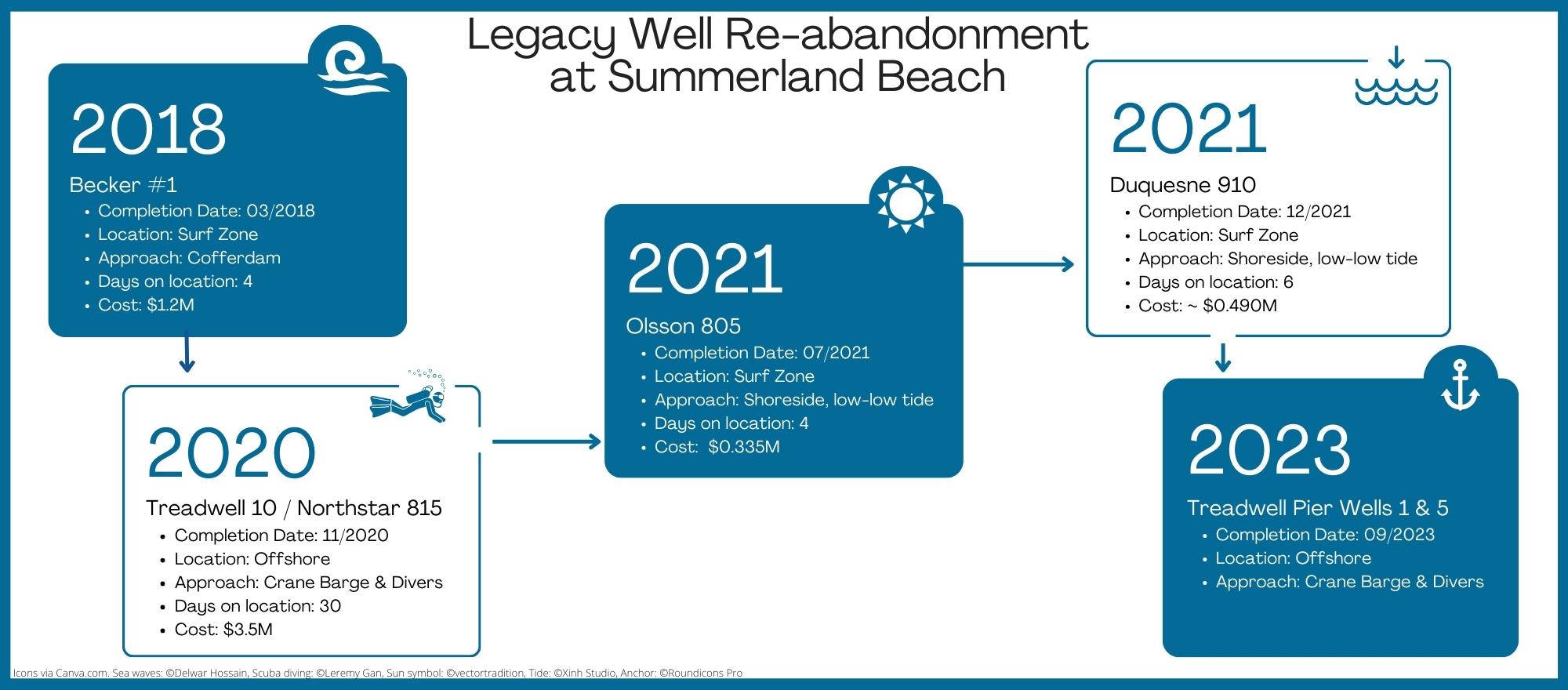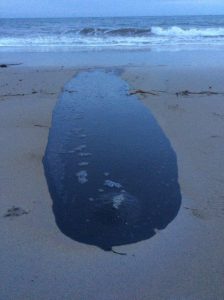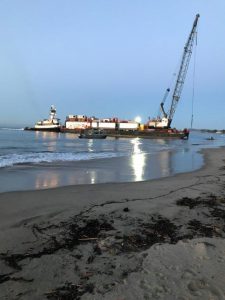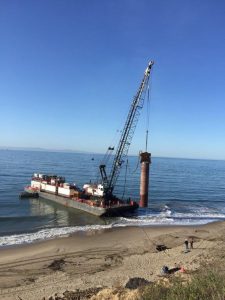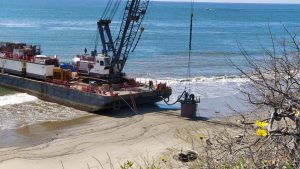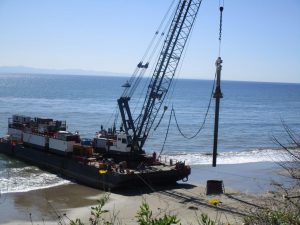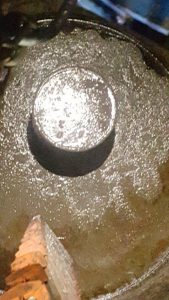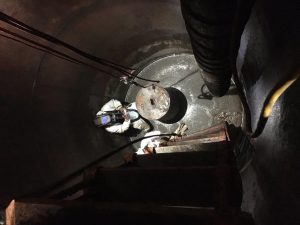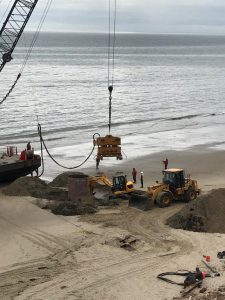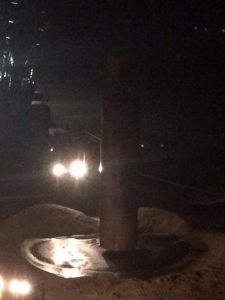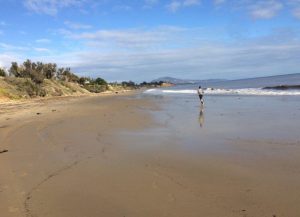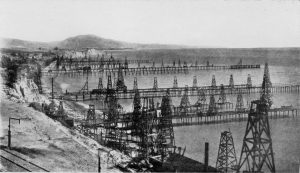
The Commission has re-abandoned six legacy oil and gas wells in Santa Barbara County as part of the SB 44 Program.
Larger view of infographic available.
In the late 1800s, the area offshore of Summerland Beach contained hundreds of oil wells and drilling infrastructure. Today, the coastline area retains the vestiges of that extensive offshore oil production. These are the unfortunate legacy of the rapid and intensive offshore oil development along the coastline that began just before the turn of the twentieth century, primarily at Summerland Beach in Santa Barbara County.
Most legacy oil and gas wells were abandoned in the early 1900s when oversight was nonexistent. Virtually no records exist regarding the drilling and abandonment of these wells. Removal, if any, varied from well to well and involved rudimentary procedures that fell well short of current health, safety, and environmental protection requirements. Based on the Commission’s research, there are roughly 200 high-priority legacy oil and gas wells (Category 1 wells), that could leak oil into the marine environment. Other wells are categorized as medium (Category 2 wells) to low (Category 3 wells).
Photo Gallery: Becker well re-abandonment
The Becker well remediation is complete. Click through the series of photos below showing the oil leakage on Summerland Beach from the Becker well and the progress from when the crane barge arrived through the removal of the cofferdam, and finally, a photo of the Becker well site post-project.
Coastal Hazards
The Commission, when funding is available, removes coastal hazards along the California coast. Coastal hazards include wood or steel piles or piling, sheet metal pilings, H piles and H beams, well casings, well caissons, railroad irons, cables, angle bars, pipes, pipelines, rip rap, and wood beams and structures. In the mid-1980s, the Commission inventoried coastal hazards and identified over 400 hazards on lands within its jurisdiction, many of which are on state and local beaches and in coastal areas that the public uses. Their presence is inherently at odds with safe beach access for recreation, fishing, surfing, swimming, kiteboarding, and other popular public activities. Removing coastal hazards is essential to safe public access.
Summary of shoreline hazards removal from Haskell’s Beach
In November 2020, the Commission and its consultant removed hazards on behalf of the City of Goleta, including 15 pipeline segments, that were exposed because of eroding bluffs. More information, including a site map, environmental compliance checklist, and pre-project biological survey, is available here.
Coastal Hazards & Legacy Oil & Gas Well Removal & Remediation Program annual progress reports
Contacts
Petroleum Production Engineer
Walter Scott
562.590.5217
CoastalHazards.Public@slc.ca.gov
Media Inquiries or SB 44 questions
Sheri Pemberton
916.574.1992
ExternalAffairsChief.Public@slc.ca.gov


